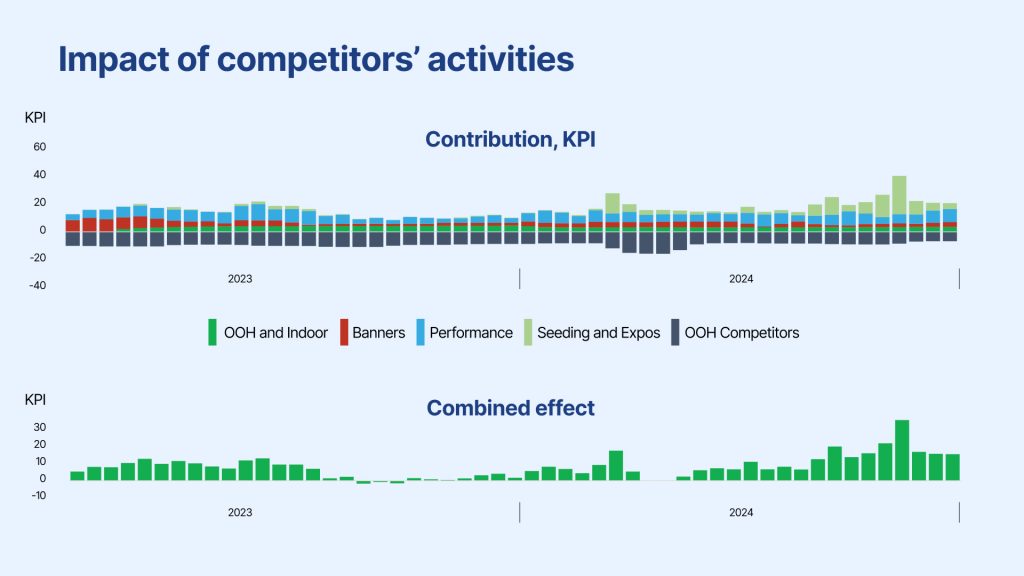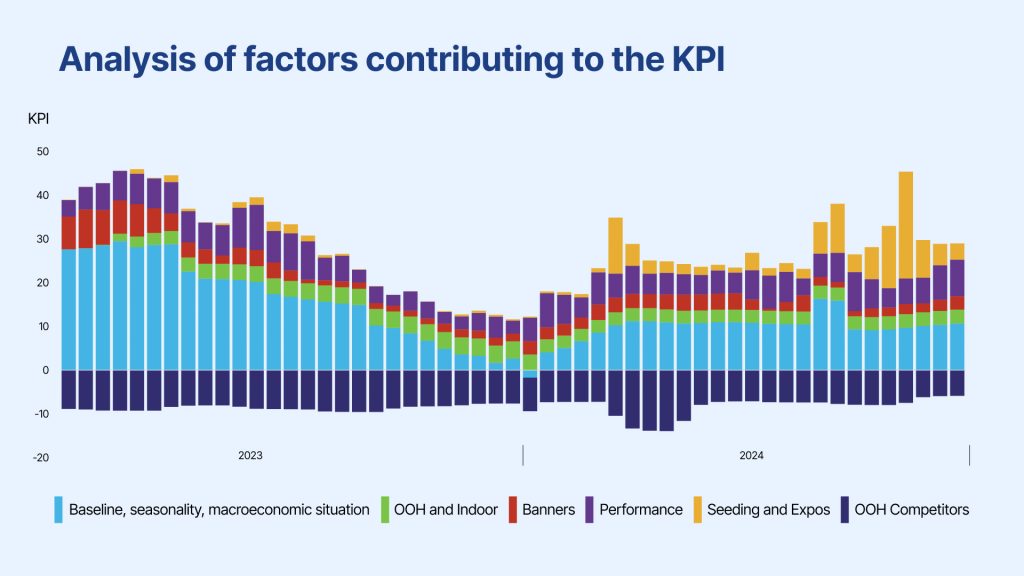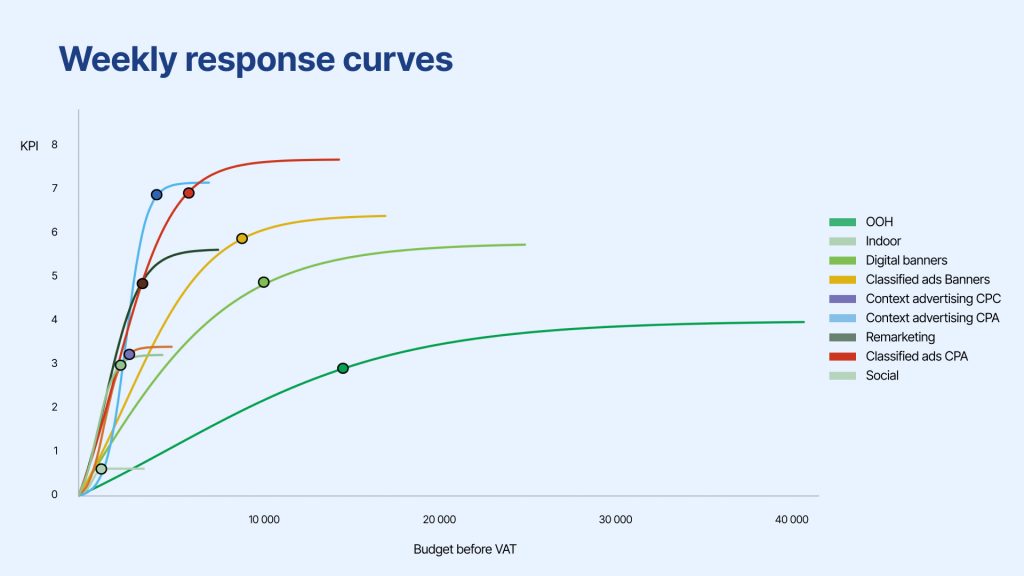
|
10 Common Marketing Budgeting Mistakes and How to Fix Them
“Half the money I spend on advertising is wasted; the trouble is, I don’t know which half.” John Wanamaker’s words may be over a century old, but marketers today can still relate. While marketing tools have evolved significantly since then, budget misallocation remains a persistent challenge. A recent global survey of 1,000 marketers by Rakuten Marketing revealed that 26% of budgets are wasted on ineffective channels and strategies. Nearly half of those surveyed also admit to mismanaging at least 20% of their total spend. That’s a lot of money being thrown away!
After reviewing case studies on marketing mix optimization, we identified the most common mistakes that result in inefficient use of marketing budgets. This article highlights those mistakes and provides practical recommendations to boost budget efficiency. Let’s dive in and see how to ensure more of your dollars work effectively where they’re needed most.
1 Lack of proper planning
Every successful budgeting effort begins with thorough planning, yet not every marketer has mastered this crucial step. Even when funds are allocated based on past results, how can you be sure your budget is truly effective? Without clear KPIs, like target sales or app installs, there’s no way to measure success. This is especially risky for startups, as they often raise funding with the expectation of delivering measurable results. If campaign budgets aren’t well-planned, they may fail to attract enough new customers to secure the next funding round.
To fix this, start the campaign planning with goal setting, where you define objectives such as brand awareness, lead generation, or conversions. Include deadlines for each campaign phase, and create a detailed timeline covering content creation, execution, and post-campaign analysis. You need to identify key metrics, such as CTR (click-through rate), conversion rates, and ROI, to measure success.
Your plan should also involve selecting channels that align with your campaign goals, whether digital (social media, email, PPC) or traditional (TV, print). Lastly, set budgets and allocate resources for each channel to maximize efficiency. Regularly adjust deadlines, channels, and tracked metrics based on real-time performance analysis to stay on target.
When you have clear goals, planning becomes easier and more effective. Leveraging benchmarks and advanced analytics can further simplify the process. Transitioning to advanced planning software not only saves time but also reduces human error through automation, making budgeting more accurate and cost-effective.
2 Overlooking flexibility in budgeting
Another common mistake marketers make is setting a rigid budget at the start of the year and sticking to it no matter what. Consumer behaviors change, competitors launch unexpected campaigns, and external factors — such as economic shifts or global events — can impact demand. If your budget can’t adapt to these changes, you might end up wasting money on underperforming platforms or missing out on new opportunities.
We saw this in full force during the COVID-19 pandemic. A survey by Dun & Bradstreet found that 80% of CMOs had to adjust their marketing plans to keep up with changing demand. Ford, for example, quickly redirected its focus from sales to digital engagement and brand loyalty, helping them connect with customers when traditional ads would’ve fallen flat.
The fix is simple: review your budget regularly — at least every quarter — and make adjustments based on what’s working. Advanced AI tools provide a modern solution, making this process easier and more precise for improved marketing performance. It’s also wise to set aside some reserve funds for unexpected opportunities. Flexible contracts with agencies, coupled with real-time performance monitoring through advanced analytics, give you the agility to adapt when needed.
In one case, we identified an opportunity in the post-COVID environment for a client. By pivoting focus to address a newly emerging consumer need, they opened up a new market segment and achieved an 18.2% increase in sales.
3 Ignoring competitors, seasonality, and macroeconomic factors
A critical budgeting mistake marketers often make is neglecting external factors such as competitors’ strategies, seasonality, and broader macroeconomic trends. Neglecting these elements can lead to forecasting inaccuracies and wasted spending. Take back-to-school shopping or holiday promotions—if your budget doesn’t account for these seasonal peaks, you’re likely to miss out on valuable sales opportunities. And when your competitors launch a major campaign, it can hurt your numbers unless you’re ready to step up your game.
To fix this, marketers should regularly monitor competitor activities, adjust for seasonal trends, and stay informed about macroeconomic changes. With our tool that provides advanced analytics, you can integrate these elements directly into your budget planning and campaign reviews, keeping your strategy agile and competitive.
This graph shows the impact competitors’ activities had on our client’s KPIs. Based on this analysis, we’ve put together recommendations for adjusting the campaign budget and media mix to better handle the competitive landscape.

This next graph reveals the big role that seasonality and macroeconomic factors play in our client’s KPIs. Using our tool, we analyzed the data and identified an optimal budget allocation that accounts for all factors impacting the KPI.

4 Underestimating the potential of reach channels
Many marketers overlook the importance of reach advertising, not fully leveraging its potential. Reach channels play a crucial role in building long-term brand value and keeping your business top of mind with customers. While they work quietly in the background to grow your customer base and sustain sales, they offer even more when combined with performance ads in a brandformance campaign. Yet, not enough marketers make use of this powerful synergy
The fix is simple: by running a brandformance campaign, you can achieve two goals simultaneously — building brand awareness and boosting performance channel effectiveness. We’ve seen this approach produce impressive results. For example, one of our clients achieved an 8% increase in their performance channel conversions simply by adding reach flights to their campaign. Don’t let this synergy go to waste; combining reach and performance strategies can make your campaigns smarter and more effective.
5 Failing to allocate budget to channels with lower CAC
This type of budget allocation mistake is common among marketers. We’ve often seen budgets allocated in ways where channels with very high customer acquisition cost (CAC) receive a significant share, while more cost-efficient options are underfunded. Why does this happen? Many companies rely on end-to-end analytics platforms that track CAC for online channels but overlook offline ones. Without these insights, budgets end up all over the place and don’t perform at their best. Our tool bridges this gap by covering both online and offline media.
The solution is to implement advanced tools like MMM. With this tool, companies can pinpoint channels with a lower CAC and optimize their entire marketing mix, resulting in a 10% to 30% boost in MROI. By reallocating budgets across the media mix and refining the overall strategy, businesses can reduce CAC, increase profitability, and achieve significant cost savings.
For example, we helped a major grocery retail chain analyze their marketing mix performance. Based on the calculation result we proposed budget adjustments that reduced the cost of attracting in-store traffic by 13%. For another client, an e-commerce marketplace, our optimization strategies not only helped them achieve their KPI of 3.8 million new customers but also reduced their total CAC by 37%.
6 Not spending enough on customer retention
Attracting new customers is essential, but many marketers overlook the value of keeping the ones they already have. According to Invesp Research, acquiring a new customer is five to seven times more expensive than retaining an existing one. Plus, Bain & Company reports that even a 5% increase in customer retention can boost profits by 25% to 95%. It’s a simple adjustment with substantial rewards!
So, how do you fix this? Start by dedicating a portion of your budget to loyalty programs and personalized perks that reward long-term customers. Even a small investment in retention can significantly improve customer lifetime value and, ultimately, revenue growth. Sephora, for instance, has made loyalty a core part of its strategy, with around 80% of its sales coming from loyalty program members. To determine if you’re investing enough in remarketing, you can analyze response curves for the channel. Learn more about this approach in the next section.
7 Not investing enough in a channel
It’s easy to assume a channel isn’t effective if the results aren’t there. However, the issue might lie in insufficient budgeting. There’s a minimum investment level needed for a channel to start generating meaningful results; if you’re not meeting that threshold, you won’t see the impact you’re expecting. This is especially true when you’re testing new channels. Without the right budget allocation, even the most promising media mix can seem ineffective.
To avoid this mistake, marketers should turn to industry benchmarks and analyze response curves generated by analytical tools to set the right investment level for each channel. A response curve shows how a channel’s performance (such as conversions or sales) changes based on different levels of investment. It has two key points:
- the inflection point, which marks the minimum effective investment level needed to generate meaningful results;
- the saturation point, which indicates the maximum level before returns diminish. It helps to prevent overspending — a mistake we’ll cover next.
8 Over-investing in a channel
When a channel performs well, it’s tempting to keep increasing its budget. But here’s the catch — every channel has a saturation point, beyond which any additional investment leads to diminishing returns and wasted budget. A quick budget reallocation can prevent this, but without proper analysis, it’s hard to know exactly where to draw the line.
The solution is to rely on industry benchmarks and response curves to pinpoint the efficient investment range. This approach prevents overspending and frees up resources for more strategic allocations across your media mix. In many cases, improving KPIs doesn’t require extra budget — it’s about smart reallocation. We’ve seen examples where budget reallocation within the same media mix resulted in a 10% boost in sales without any extra spend.
For one client, we analyzed their media mix and discovered that only one of nine channels was optimally funded. Four channels were within the efficiency range but could be adjusted slightly for better results. Half of their channels needed more significant changes, with three outside the efficiency range and one surpassing the saturation point. Using these insights, we provided recommendations for future media mix adjustments, ensuring their budget delivered maximum impact.

9 Lack of post-campaign revision and optimization
It’s tempting to leave things as they are when campaigns seem to be working. But what if you’re unknowingly overspending? Many marketers stick to their original budget allocations without thoroughly analyzing what worked and what didn’t, potentially missing opportunities for improvement. Adidas learned this the hard way when a temporary payment issue prevented them from running Google Ads in Latin America. Surprisingly, this had little impact on their sales and traffic, prompting them to re-evaluate their digital ad spending.
This glitch turned out to be a blessing in disguise, giving Adidas an unexpected insight into their budget allocation. But not every company gets such a clear wake-up call. The good news? You don’t have to wait for a fortunate incident to find out what’s working in your campaigns.
The fix is simple. Adidas turned to Marketing Mix Modeling to get a comprehensive view and optimize their spending — something you can do too. Start by gathering high-quality data on your marketing campaigns and sales. With this data, tools like MMM can reveal what’s truly effective. You can even run “what-if” scenarios to see different budget allocation options, helping you spend strategically for the best results without increasing the budget.
For example, we helped one client maintain their sales while cutting the product’s marketing budget by 60%. The client accomplished this result by implementing one of several budget optimization scenarios generated by our AI-driven MMM platform.
10 Missing the need for marketing technology
One of the biggest mistakes marketers make is not investing in the right marketing technology. A lot of the issues we’ve talked about arise when companies lack the necessary tools for identifying inefficiencies or capitalizing on opportunities.
Sure, tech tools come with a price tag, but think of them as an investment that pays you back. Research shows that companies using AI-driven tools for their marketing see up to a 30% boost in ROI. And according to McKinsey, advanced analytical technologies like MMM can help companies increase their marketing productivity by over 15% annually. Automation platforms and analytics tools enable smarter decision-making, leading to cost savings in the long run.
The fix? Start with an analytics tool that fits your needs and get it up and running as soon as possible. Adding MMM to your toolkit can be a great choice. Choosing the right option requires considering these key criteria:
- Statistical Validation: The tool’s models should pass essential statistical tests to guarantee the reliability of its insights.
- Actionable Insights: The results should be easy to interpret and translate into practical actions for your team.
- User-Friendly Interface: An intuitive dashboard can make data analysis easier and more accessible for team members of varying expertise. This is particularly valuable if your team doesn’t have a dedicated data analyst.
CheckMedia is designed to meet every requirement, so you’re covered on all fronts! Want to ensure every marketing dollar works harder for you? CheckMedia’s AI-powered tools provide the insights you need to streamline budgeting and drive real results. Book a demo now to see how it works.



